The Thousand Islands Railway (TIR) had its origins as the third railway of the Rathbun Company of Deseronto, ON. What was originally the Gananoque and Rideau Railway, chartered on February 15th, 1871, became the Thousand Islands Railway on March 25th, 1884. Construction began in 1888, with the line open for business in 1889.
This rail line was a great boost to the factories of Gananoque, which had sprung up on both sides of the Gananoque River, due to an adequate source of water power created by the upper and lower falls. These factories needed a way for their products to be shipped out, and the 6.33 mile rail line, from the main rail line to the Gananoque waterfront, was the answer. The Rathbuns, who owned large tracts of prime timberland, also used it to ship lumber in and out for their retail lumber business.
In 1889, the swing bridge was built across the mouth of the Gananoque River to allow access to the Carriage Works, which is now the site of The Gananoque Inn. This was accomplished by a track running east along Water Street from where the line curved to run parallel to the St. Lawrence River, at the point where the waterfront station was located, at the foot of Main Street. Carriages would be loaded onto flatcars via a loading ramp for shipment to the Grand Trunk Railway (GTR). The Carriage Works moved to Brockville after a generous subsidy was offered to the Works for the move; thereafter, the track was removed, and the bridge was deeded to the town. The bridge is still in operation, albeit only single lane.
At a recent meeting of the Gananoque Historical Society, President John Nalon showed a picture of the track over the swing bridge. It was the only picture of the track over the swing bridge that anyone present had ever seen.
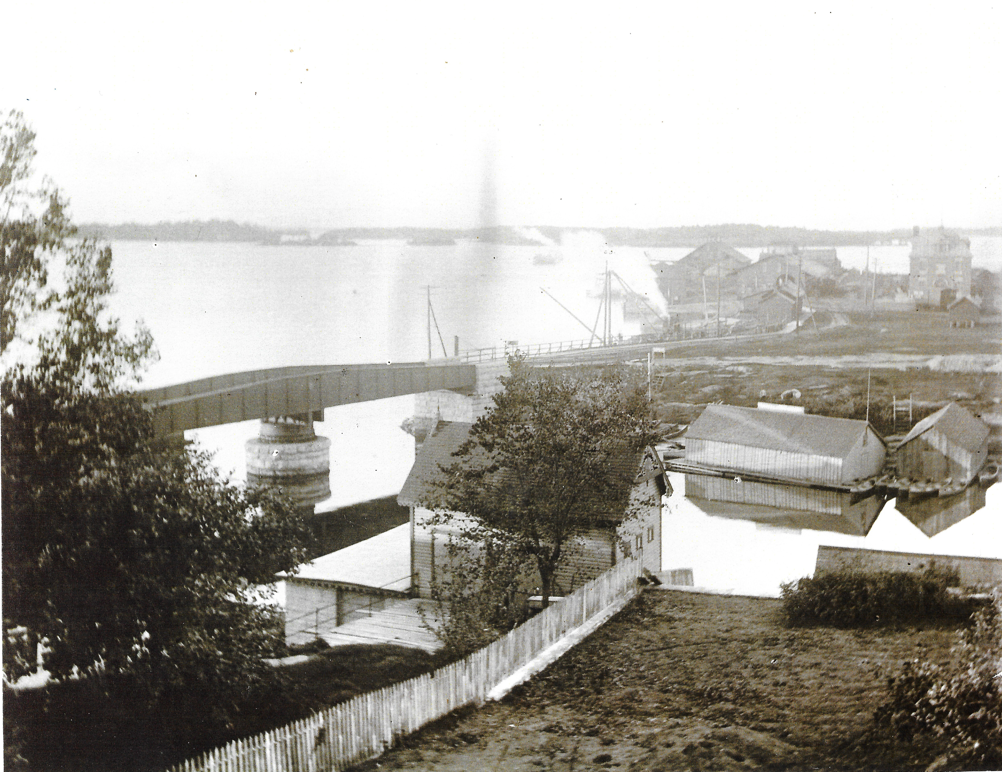
The swing bridge was opened manually by two men using long poles. The poles were inserted through the bridge deck into the top of the cranking mechanism. The men then walked in a circle to push the bridge open; to close it, they simply walked in the other direction. It was swung at first to allow colliers to discharge their coal loads beside the spur at the foot of the mainline, where it curved to the west along the waterfront. I can remember seeing Lehigh Valley coal hoppers loaded with Pennsylvania anthracite for Shortall's Fuels, in the early 1960's.
The new rail line also filled a need for passengers arriving at the Junction, enabling them to get into town more reliably, particularly when the roads were impassable due to snow or mud, depending on the season. The car used was a "combine," a coach with a section for both passengers and baggage. The line began at the waterfront and served several industries along its route, as it zigzagged from side to side of the Gananoque River out to the Gananoque Junction. At the Junction, it joined the double track mainline of the GTR, Canadian National’s predecessor, which had been constructed during the 1850's. The Kingston to Brockville section of the Grand Trunk was constructed by Mr. Charles Legge, whose family (on his mother's side) was one of the early families in Gananoque.
In 1911, the Rathbun family sold its interest in the railway to the Grand Trunk Railway.
The Gananoque waterfront station also provided a connection to the main rail line for people arriving via the ferry from Clayton, NY. Prior to the opening of The Thousand Islands Bridges in 1938, ferries were the only way to cross the River, west of Montreal.

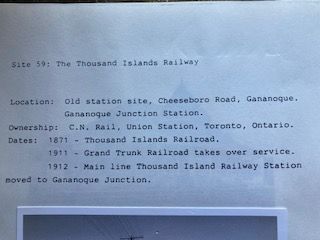
The point at which the TIR initially met the mainline was a steep grade. As a result of that grade, the Junction station was moved about two miles to the east in 1912, running parallel to the south track, along the same roadbed as it rose to the mainline track.
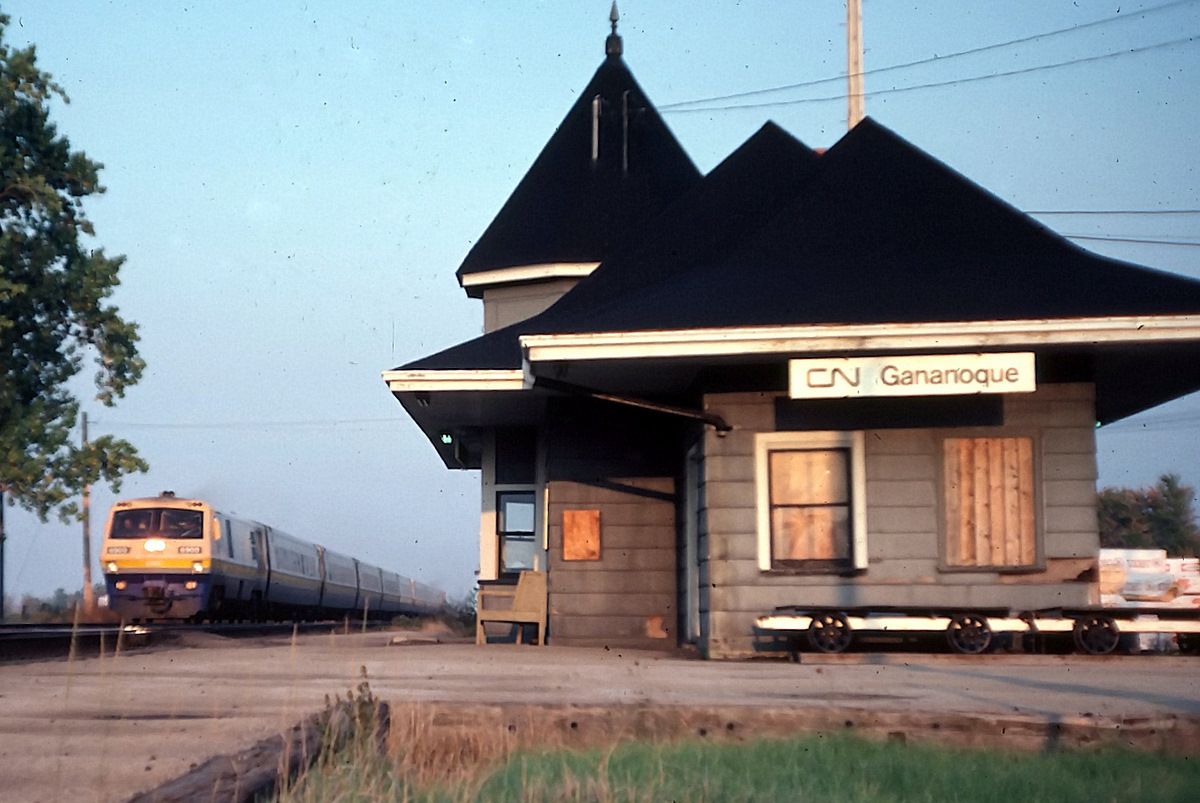
The railway used an assortment of small double ended steam locomotives over the years, from 1889 until 1912. These included #3, a 4-4-0, which was used during construction and for five years thereafter, and an 1894 vintage "Dickenson Compound," a 2-4-2T (Tank) Baldwin locomotive from the Baldwin Locomotive Works, Philadelphia, PA. Several other tank engines were used over the years, up until the late 1920's.
The advantage of a tank engine was that it negated the need to carry a separate water tender; water could be carried in long tanks on each side of the boiler and coal could be carried in a small bunker located directly behind the cab, but still be part of the engine. This reduced weight and allowed good vision out both ends of the small, short engines, greatly aiding in switching moves at the various industries along the line.
In 1930, #500, a Steeple Cab Diesel Electric, built in the Oshawa Railway Shops as a Gas-Electric engine, was transferred to the TIR. It served from 1931 until the end of passenger service in 1957. It was officially retired in 1962. From 1957 onwards, Canadian National used GP9's to handle freight switching duties.
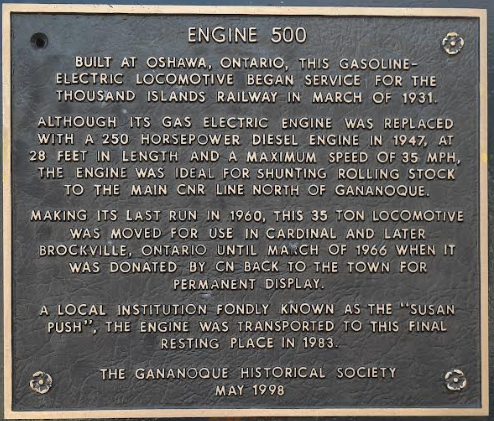
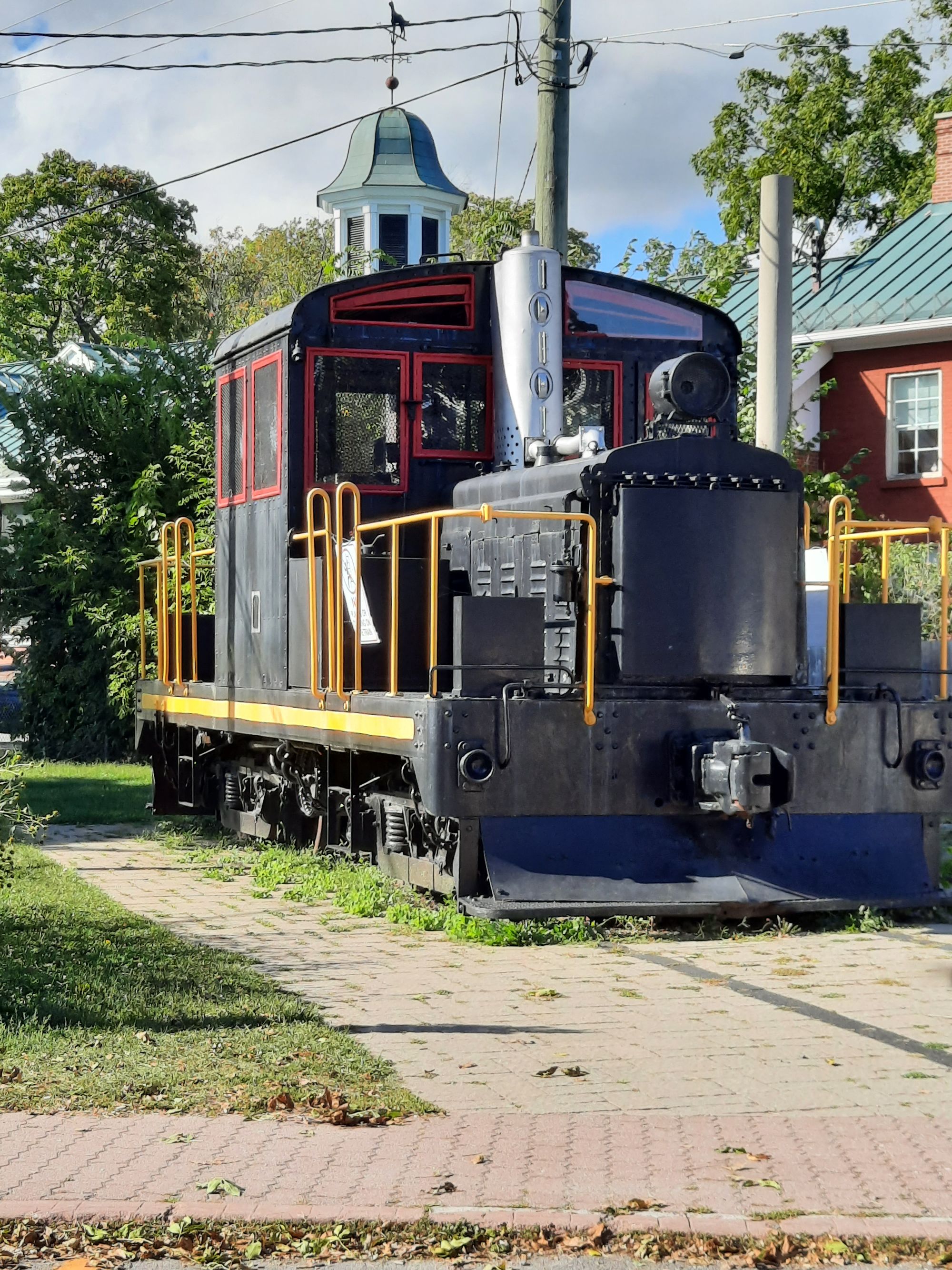
Although I never saw #500, the Susan Push aka "The Black Panther" in operation, I do recall seeing the CN "Geeps," coming down the line into town, switching empty gondola cars (gons), into Stelco (Steel Company Of Canada), and pulling out "gons" loaded with scrap metal from the forge plant. Bell ringing, it would continue south towards the waterfront, inching past the dam, down alongside the old Jones Shovel Company (now the Gananoque Library and Visitor Centre), then over the “raceway" inlet for the Gananoque Light, Heat and Power Company's turbines, which were located at the lower outlet of the Company buildings where they disgorged their water into the Gananoque River, just below the lower falls.
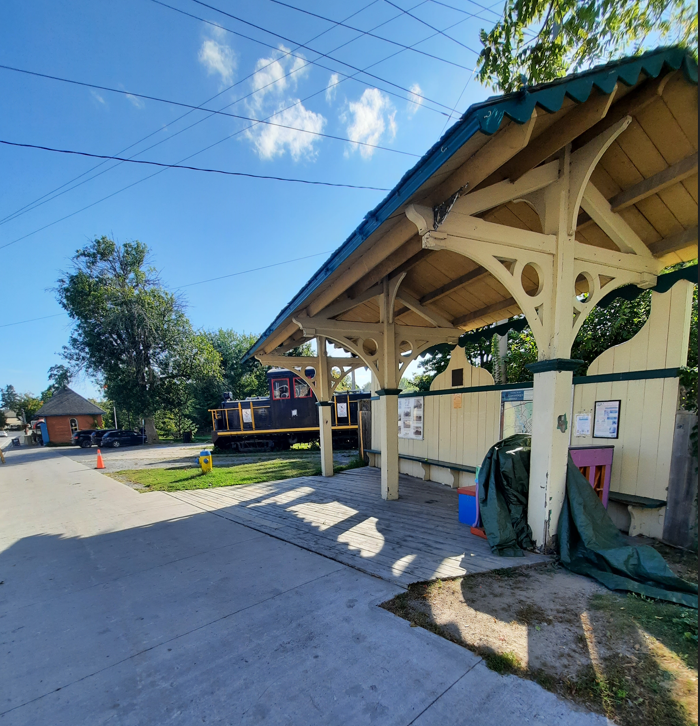
The line passed "The Umbrella," which is still in place on the north side of King Street. For years, this was a location where people could mail letters and other small items, which the conductor would collect. It also afforded a small amount of shelter from the elements and was a place for passengers to sit while waiting for the train.
Eventually, the train would arrive at the large Cow and Gate Milk Products plant, located at the very end of the line, where Joel Stone Park is today. Here, using a "run around" track, the engine would get on the north side of the cars making up its train and could also shove the aforementioned coal hoppers onto the short spur track that ended at Water Street.
At a waterfront ceremony on June 4th, 1966, CN officially donated “The 500" to the town, after a request from then Gananoque Historical President (the late) J. R. McMurrich. It was subsequently moved on June 2nd, 1983, to its present location adjacent to "The Umbrella," on the north side of King Street, after CN abandoned the line. It remains there, for all to see and appreciate the 28 or so years of service it performed for the town, and the 79 years of service provided by the rail line itself.
Several of the bridges over the river remain, although the rail roadbed now is just a walking trail, within the town limits. It was CN's shortest subsidiary and branch line, which even had a stop at the Gananoque cemetery!
Acknowledgements:
"Historic Gananoque” H. Wm. Hawke, Mika Publishing, Belleville (1974)
“By Rail, Road and Water to Gananoque” Douglas N.W. Smith, (assisted by John Nalon, Gananoque Historical Society) Trackside Publishing (1995)
By Joseph W. Naismith
Joe Naismith grew up in Gananoque, before following the siren call of the rails, and moving west to work for CP Rail in the early 1970s. During his years with CP, he worked in the Engineering Dept, and ran Maintenance Of Way crews in both Alberta and British Columbia, looking after the rail lines. He also operated a snow fighter (a ballast regulator equipped with a plow), and snow augers with blowers to blow snow out of switch areas, through the mountains to keep the rail lines through the Rockies clear of snow in the winter. A devout fan of steam trains, Joe has travelled around the world to “chase steam,” including China, Poland, Germany, Canada, South and Southern Africa (Botswana, Zimbabwe, Zambia), and the US. If there’s an organization related to steam engines, he probably belongs to it! Shortly after retiring from CP Rail, Joe moved back to Gananoque, where he is still involved with steam trains and organizations related to trains.


[Editor's Note: Certainly the railroad brought early tourists to Town. Several businessmen from Montreal or Toronto would commute on weekends and their families spent the summer on nearby islands. Also, evidently the station master had a unique trait. He could identify newly weds as they stepped off the train. "How did he know?" was the question. The young gentleman always wore new shoes!]
Posted in: Volume 18, Issue 9, September 2023, History, Places
Please click here if you are unable to post your comment.
